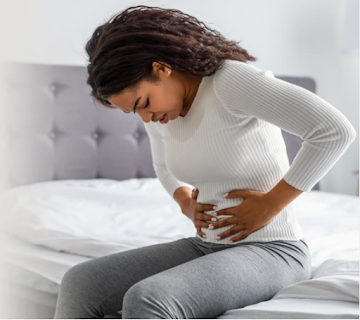Endometriosis is a common and painful condition where tissues similar to the lining of the uterus grow outside the uterus. The lining of the uterus is known as the endometrium. Some symptoms include pelvic pain, menstrual bleeding, and difficulty getting pregnant.
Endometriosis can be effectively managed with the help of medication, surgery, or lifestyle modifications. To provide one with helpful information, Dr. Chaitali Mahajan Trivedi, one of the Best Gynecologists in Mumbai practicing at Nanavati Super Specialty Hospital, has discussed endometriosis treatment in detail. Read on for more valuable insights.
What is Endometriosis?
Endometriosis is a painful disorder associated with menstruation. It is a medical condition that occurs when endometrial-like tissue develops on the ovaries, bowel, and tissues lining the pelvis. Hence, the common areas affected by endometriosis are fallopian tubes, ligaments, and ovaries that provide support to the uterus, the space between the uterus and rectum, and the lining of the pelvic cavity.
In this situation, the endometrial-like tissue performs the same tasks as endometrial tissue within the uterus. This means that it thickens, breaks down, and bleeds with each menstrual cycle. Since this tissue cannot leave the body, it becomes trapped inside. It may develop into endometriomas that include the ovaries and cysts. The endometrial growth can affect the adjacent issues, eventually leading to scar tissue, which results in pelvic issues and may result in problems with female fertility.
What are the Signs and Symptoms of Endometriosis?
Painful periods can be the first sign indicating that a female has endometriosis. According to Dr. Chaitali Mahajan Trivedi, who is also known for offering the best Endometriosis treatment in Mumbai, the most common symptoms of endometriosis include:
Severe pelvic pain – which occurs sometimes and is associated with menstrual periods.
Bowel-related symptoms
Experiencing pain during sexual intercourse
Pain with ovulation
Abnormal menstrual bleeding and excessive bleeding
Infertility and subfertility.
Other symptoms of endometriosis can include:
Lower back pain
Feeling of tiredness
Premenstrual syndrome (PMS)
Urinary tract infections or pain before or while passing urine.
Lesions, nodules, and cysts made of endometrial tissue can develop in the pelvis, the pouch of douglas, the ovaries, the colon, the ligaments, and the bladder. Adhesions, a type of fibrous scar tissue that makes internal organs or tissue stick to one another, can also develop. In more severe phases of the condition, endometriomas, i.e., cysts on an ovary may form.
In general, the severity of symptoms is not correlated with the extent of the disease; for instance, some women with mild endometriosis might experience severe symptoms and vice versa. Not every woman with endometriosis faces regular monthly symptoms. Endometriosis symptoms typically improve during pregnancy and after menopause.
How is Endometriosis Diagnosed?
To diagnose endometriosis, the patient is generally asked to describe the symptoms, including the location of the pain and when it usually occurs. The final diagnosis is based on the following:
Pelvic Exam: This is done by palpating the areas in the pelvis to check for any problems, such as cysts forming on the reproductive organs or scars behind the uterus. Except in cases when endometriosis has resulted in a cyst, small areas are typically impossible to feel.
Ultrasound: This test uses high-frequency sound waves to produce internal images of the body. A transducer is either placed against the abdomen or inserted into the vagina to capture images for the diagnosis of endometriosis. Both types of ultrasounds may be done to get the best view of the organs. Standard ultrasound imaging tests can detect endometriosis-related cysts but cannot tell the doctor whether a patient has endometriosis.
Magnetic Resonance Imaging (MRI): In this test, a magnetic field and radio waves are used to create detailed images of the organs inside the body. An MRI gives the surgeon detailed information about the location and size of the endometrial implants and helps in surgical planning.
Laparoscopy: This procedure allows the surgeon to see the abdomen in depth. The surgeon inserts a laparoscope through a tiny incision near the navel while the patient is under general anesthesia. Information regarding the location, scope, and dimensions of the endometrial implants can be obtained via a laparoscopy. A surgeon could also get a tissue sample (biopsy) for additional testing.
To learn more about endometriosis treatment, one can consult Dr. Chaitali Mahajan Trivedi at Nanavati Superspeciality Hospital. She is also known for performing the best Hysterectomy treatment in Mumbai. To avail the benefits of the best endometriosis treatment book a consultation now.
